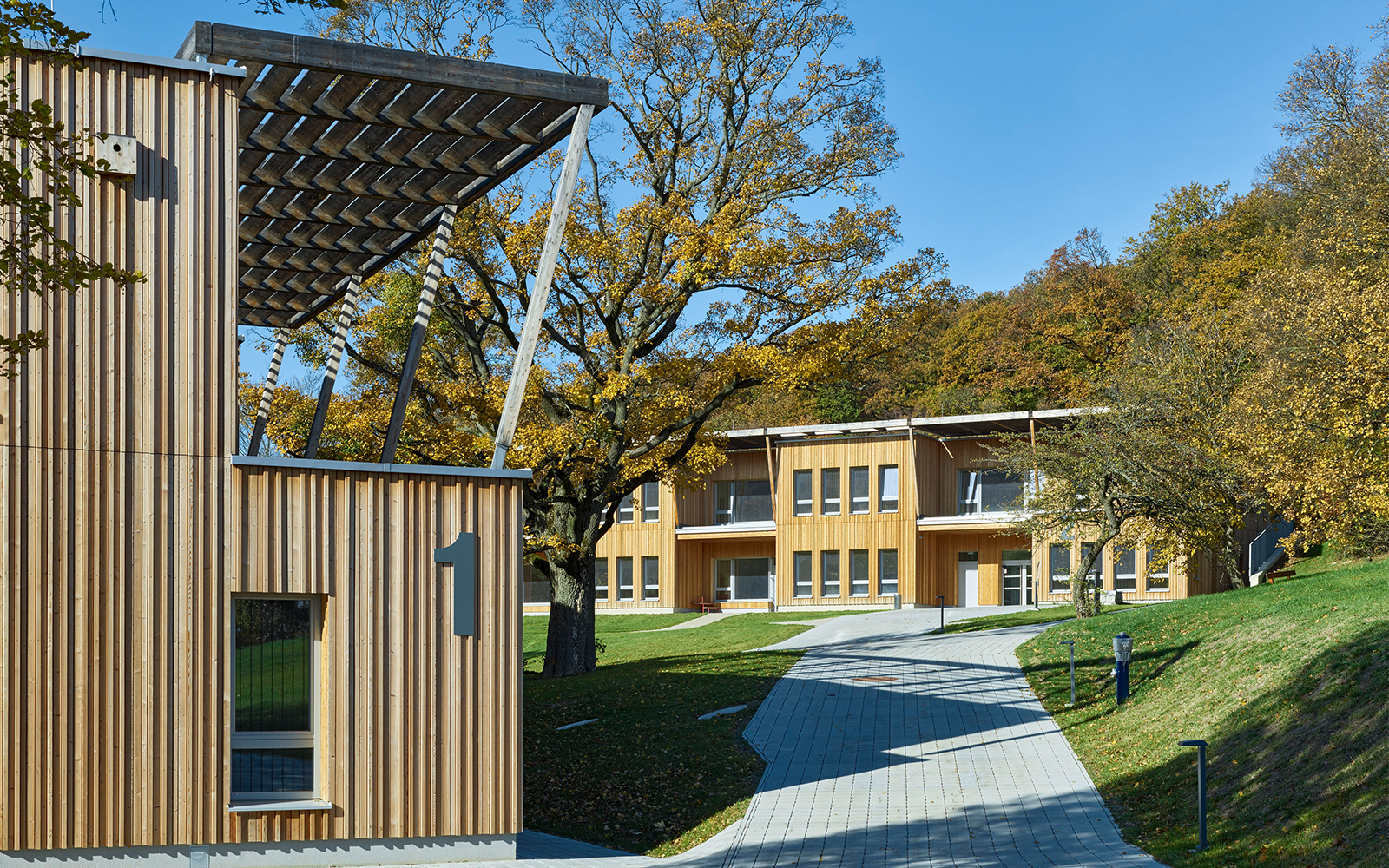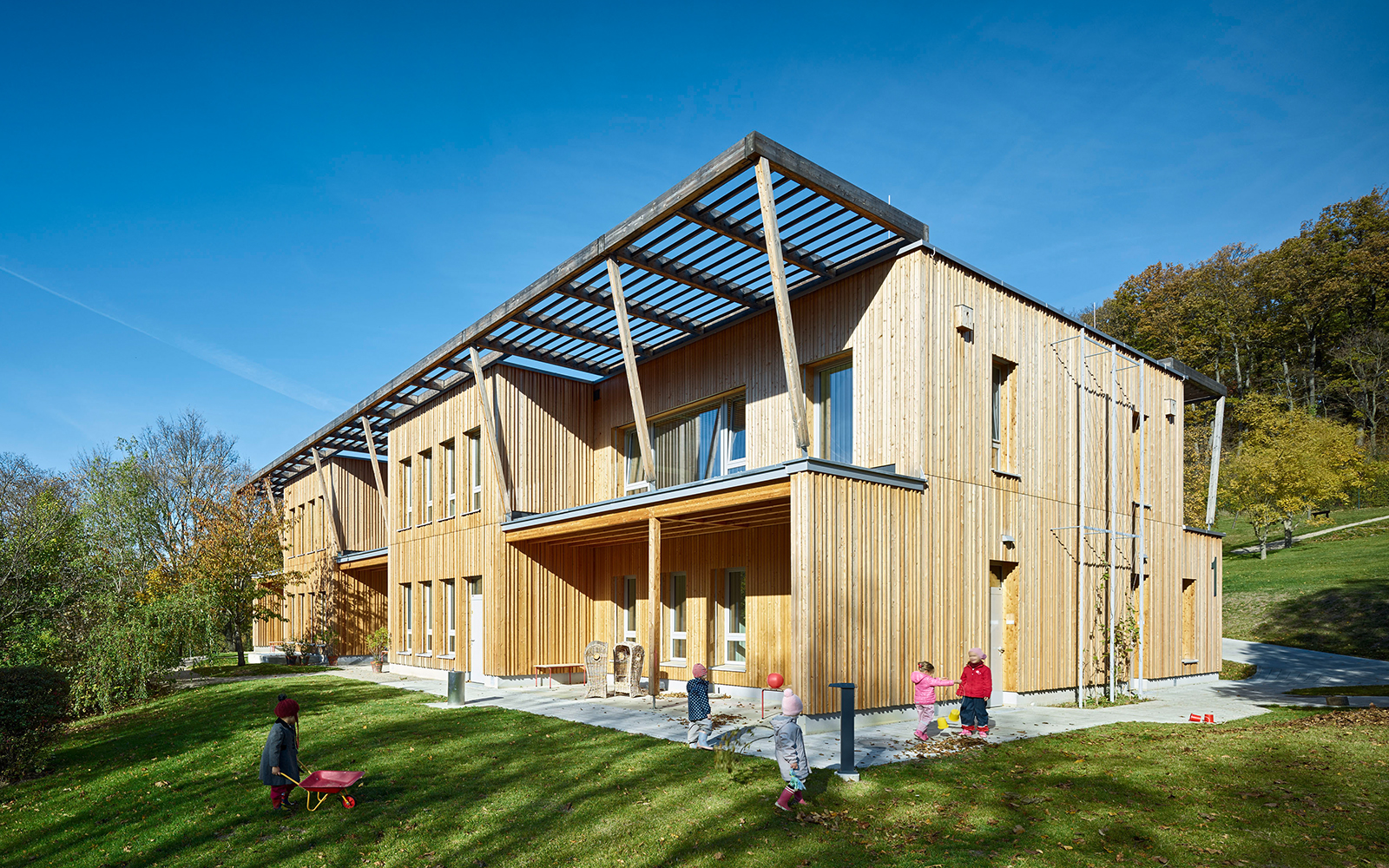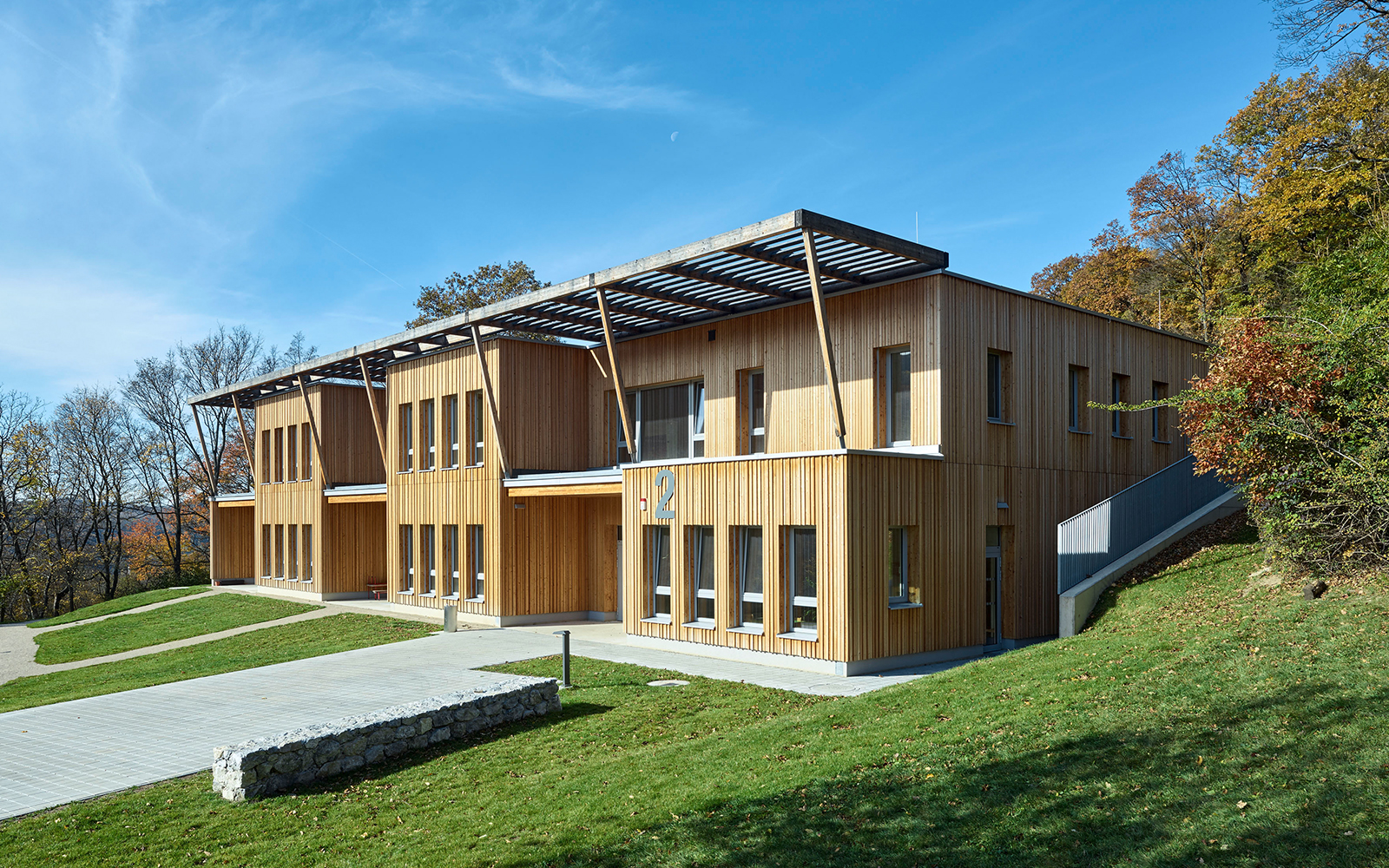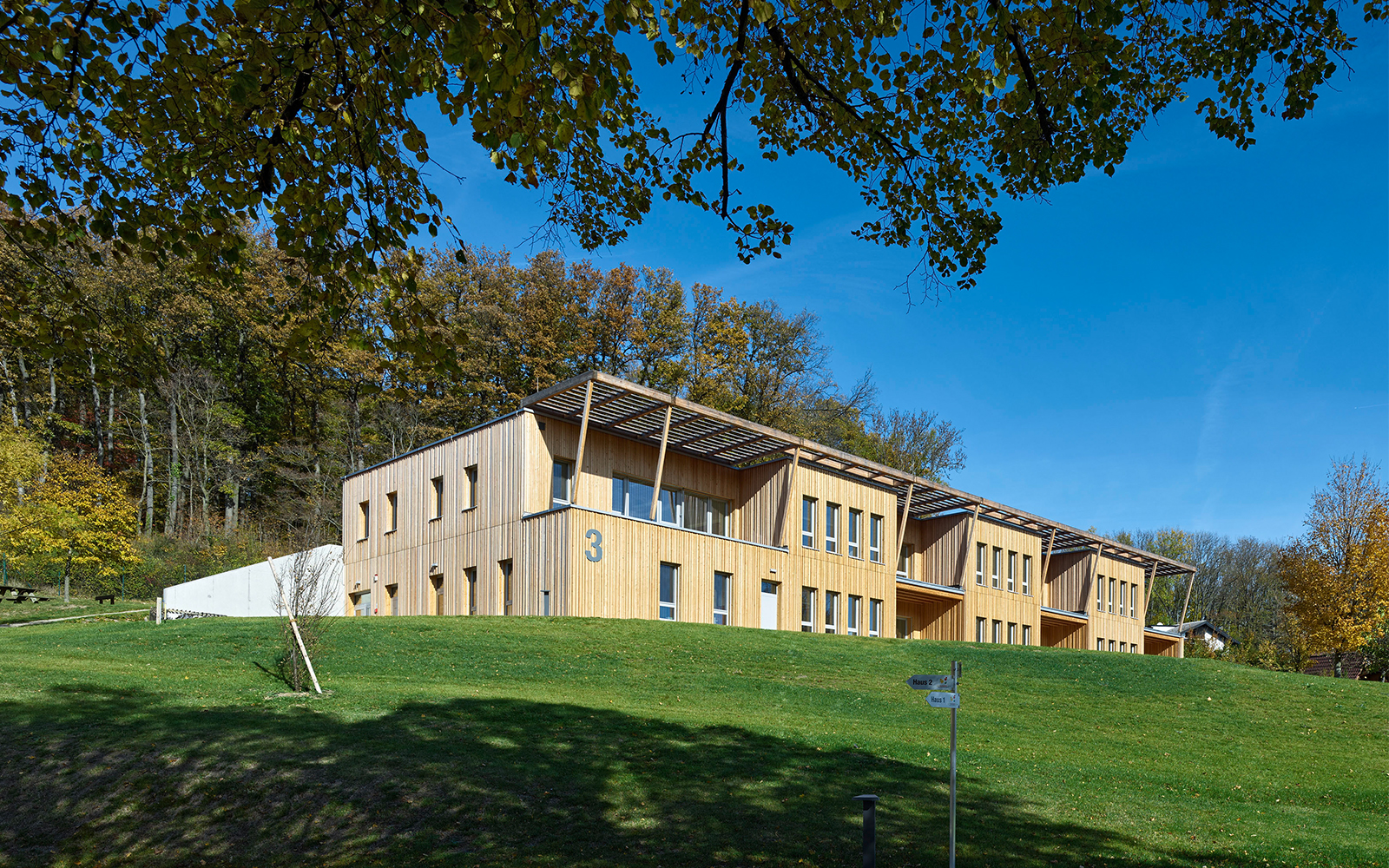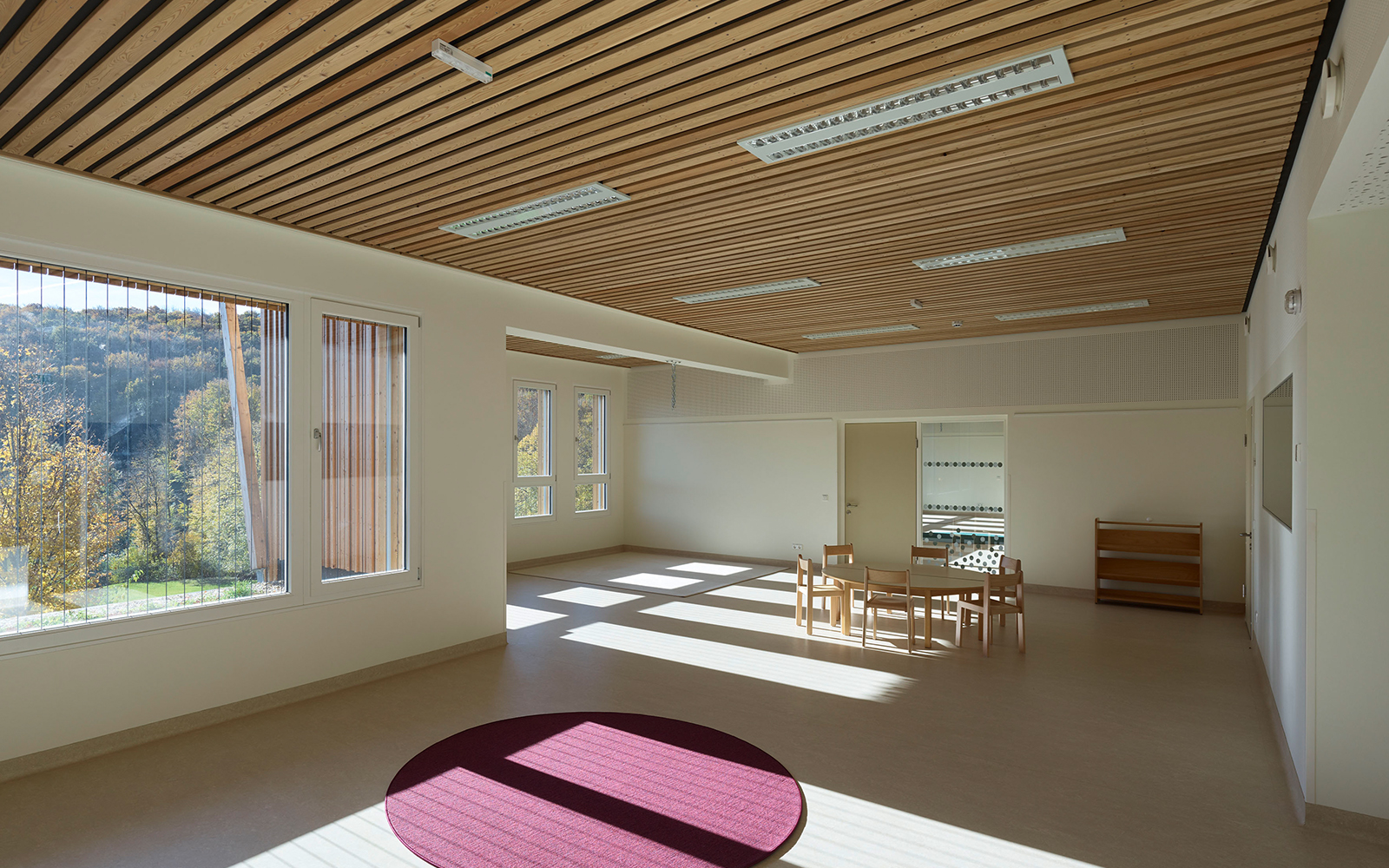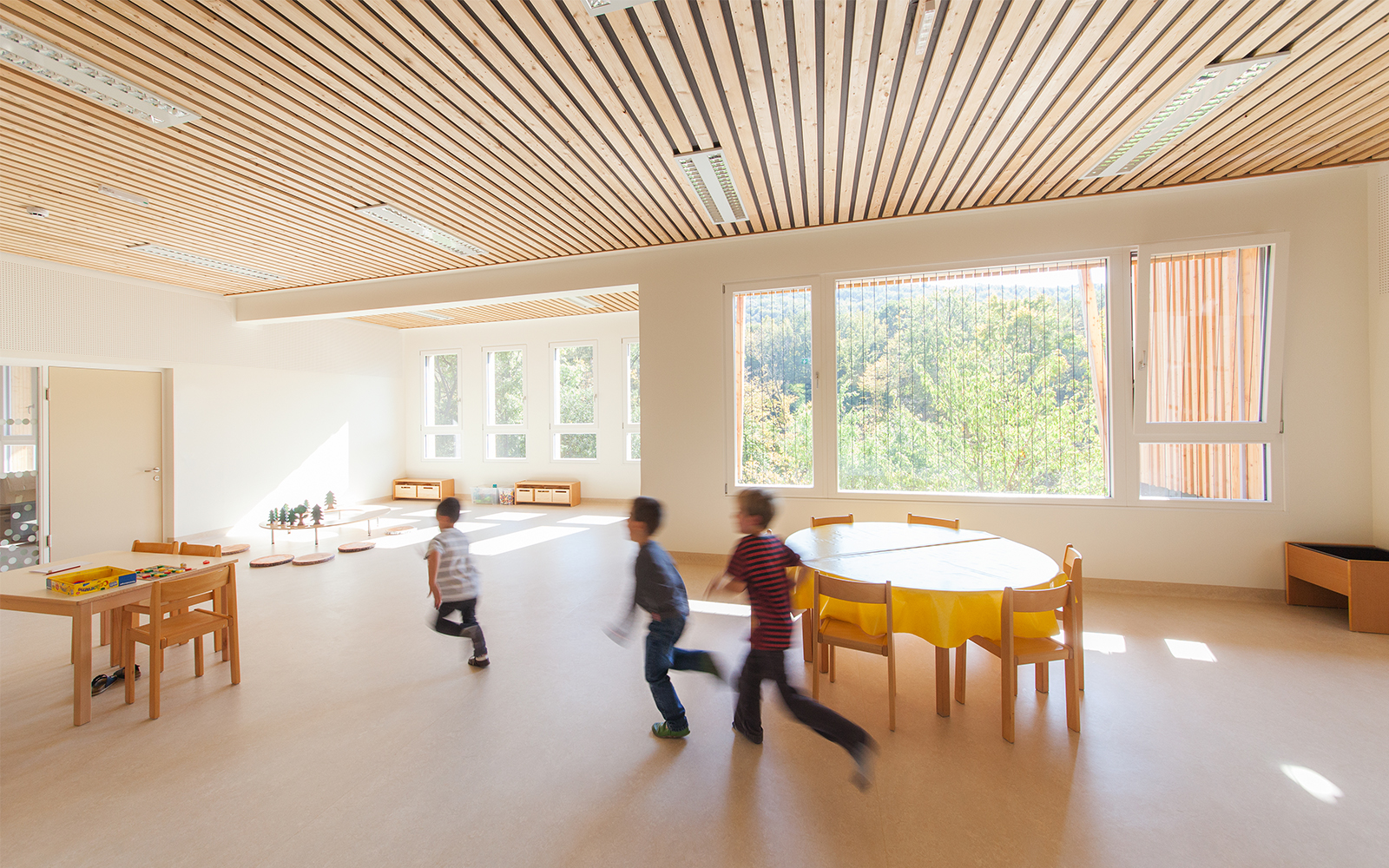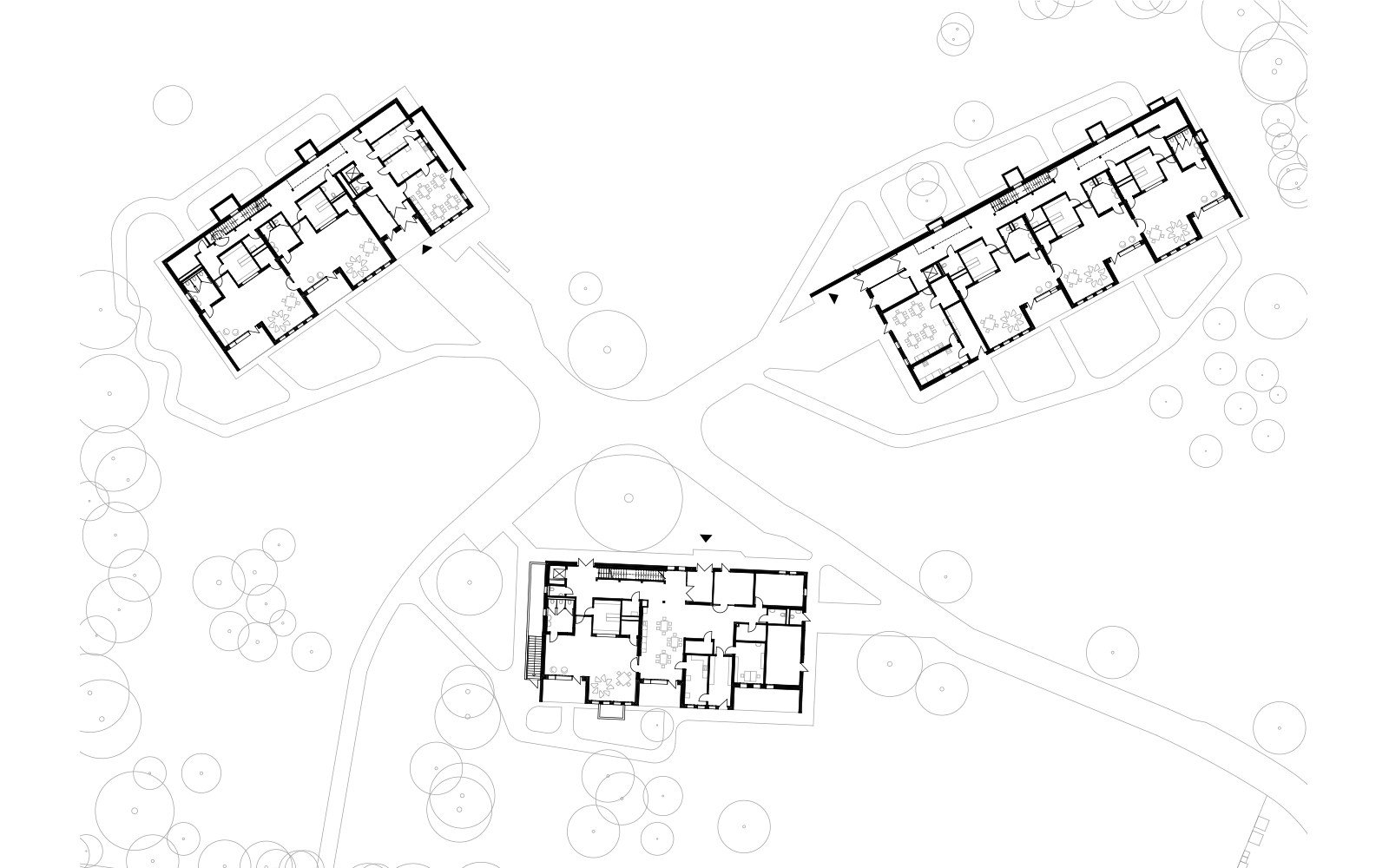Kindergarten Pötzleinsdorf
2018
2018
Pötzleinsdorfer Strasse 230, 1180 Vienna
Client: City of Vienna MA 10
Area: 3,700 m² gross floor area
Space allocation plan: Kindergarten for 270 children
General planner: RWT plus
General contractor: Ing. W.P. Handler Bauges.m.b.H.
Photos: Bruno Klomfar (1-5), Romana Fürnkranz (6)
The location in the park's protected area required particular attention to ecological aspects to be observed in the construction of this new building, which was to replace an outdated childcare facility from the post-war period. In addition, the construction during ongoing operations required a short construction period and low construction site emissions. Apart from the basement and the floor slabs, respectively, the three houses were therefore built in a skeletonised timber module construction method at the same position as the previous single-storey buildings, which had become too small. The wall and ceiling panels made entirely of glue-laminated timber were delivered prefabricated, the assembly of the larch wood façade was carried out on site. Styrofoam was not used as insulation material, instead materials such as foam glass gravel and foam glass panels were used for the basement wall and perimeter insulation, and wall insulation was made of mineral wool. The landscape conservation measures focused on preserving the diversity of regional animal and plant species and their basis of life. Extensively greened roofs, nesting and breeding places for protected animals such as bats and swifts, bee hotels for wild bees and retreats for lizards were therefore just as much an integral part of the room programme as the spacious group rooms with plenty of daylight and a good indoor climate for the children. Thanks to an adapted pathway leading through the area, the three differently sized houses are now accessible without barriers.
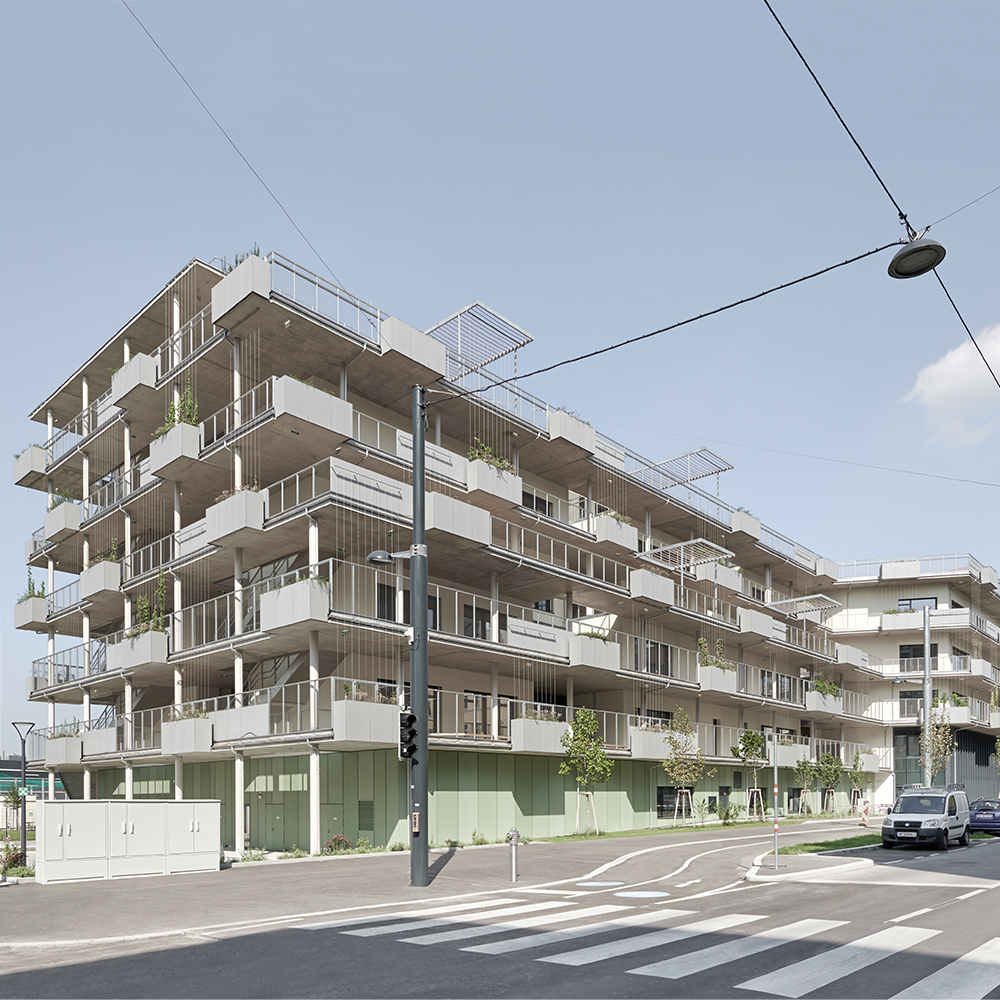
1st Prize
Education Campus Innerfavoriten
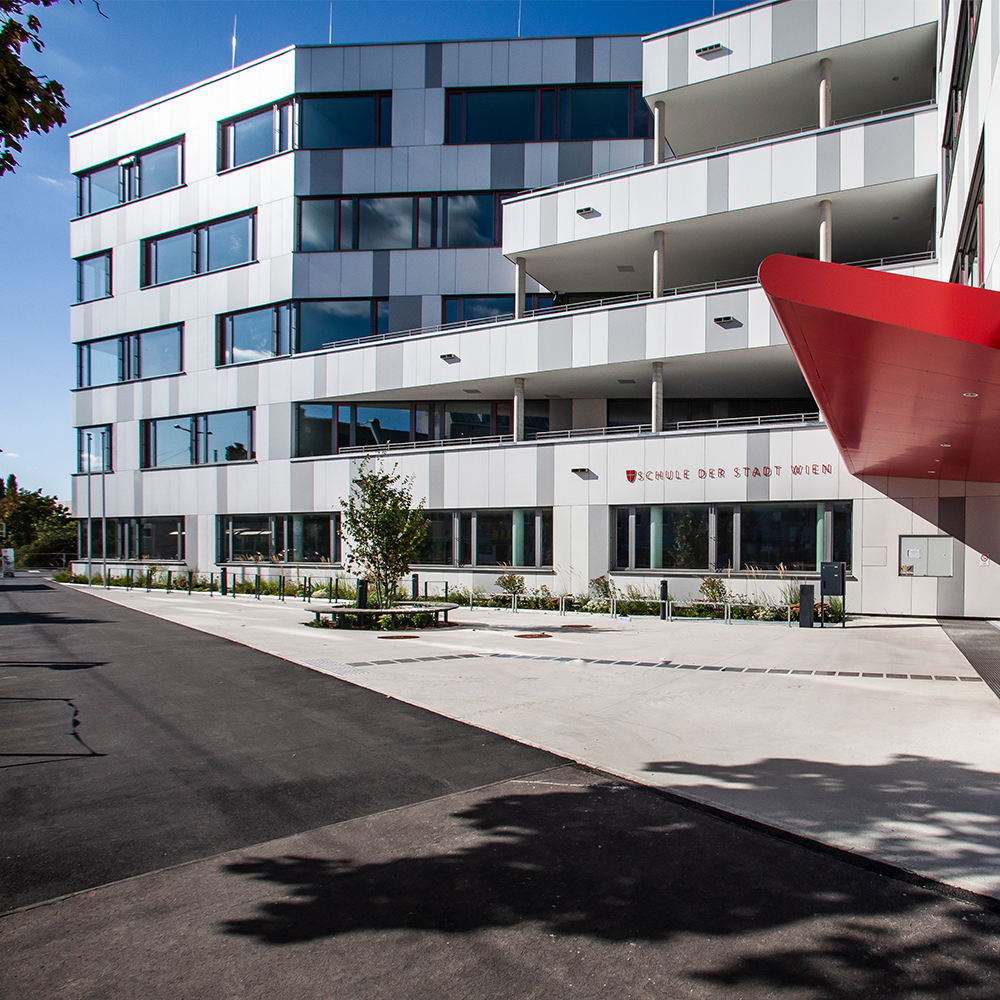
1st Prize
Primary school and Middle School Langobardenstraße
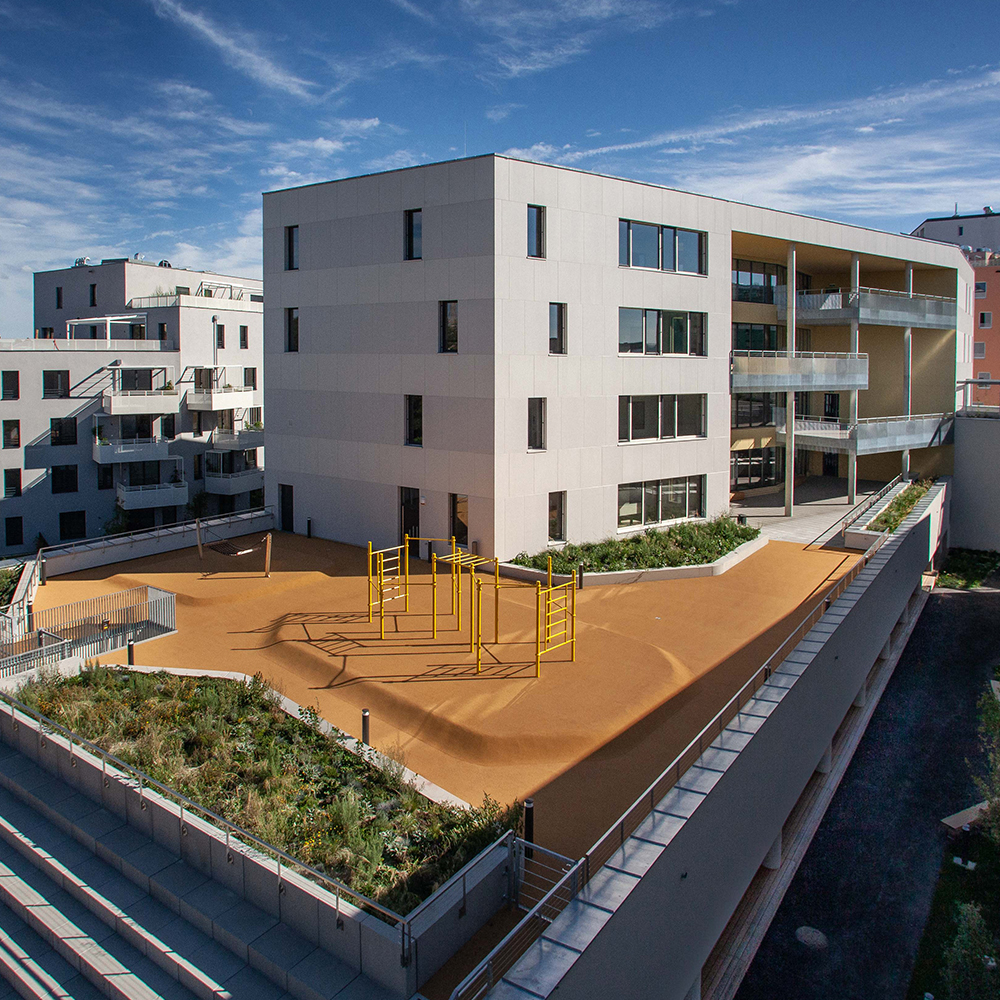
1st Prize
Middle School Wienerberg
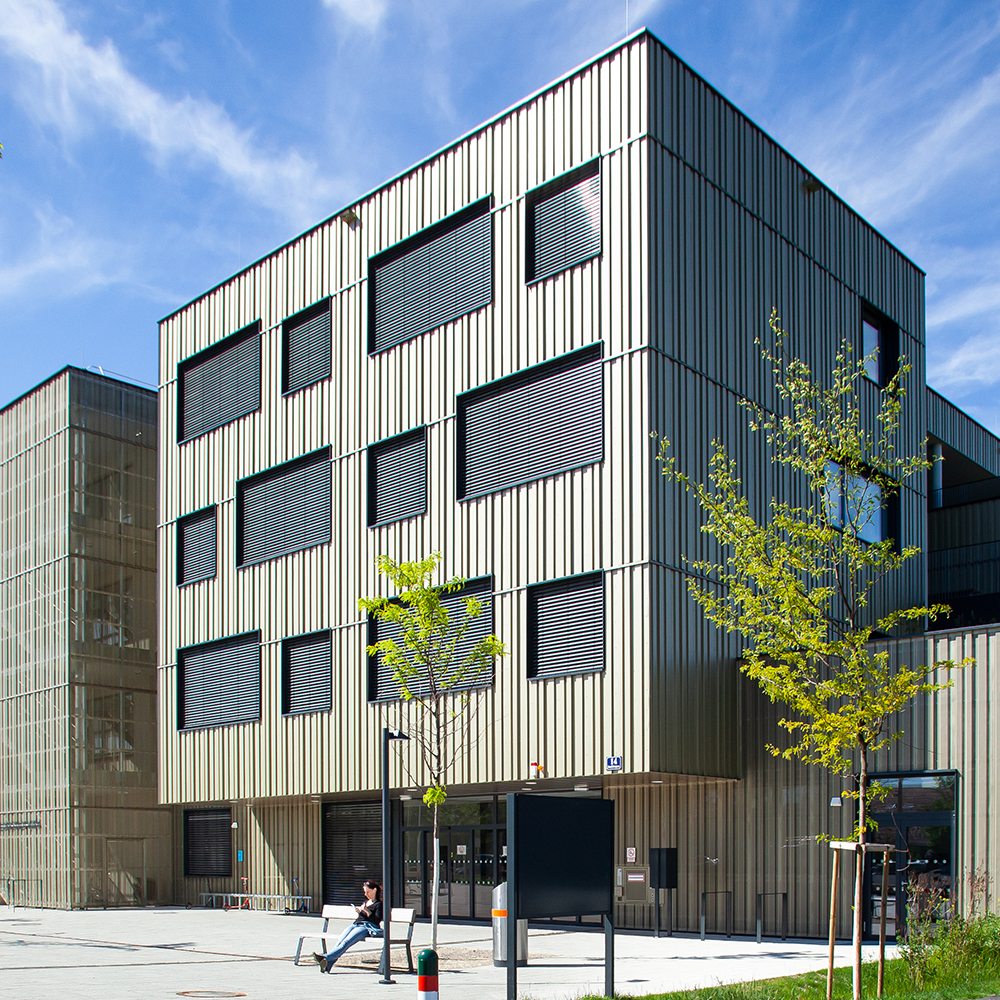
1st Prize
Primary School and Middle School Grundäckergasse
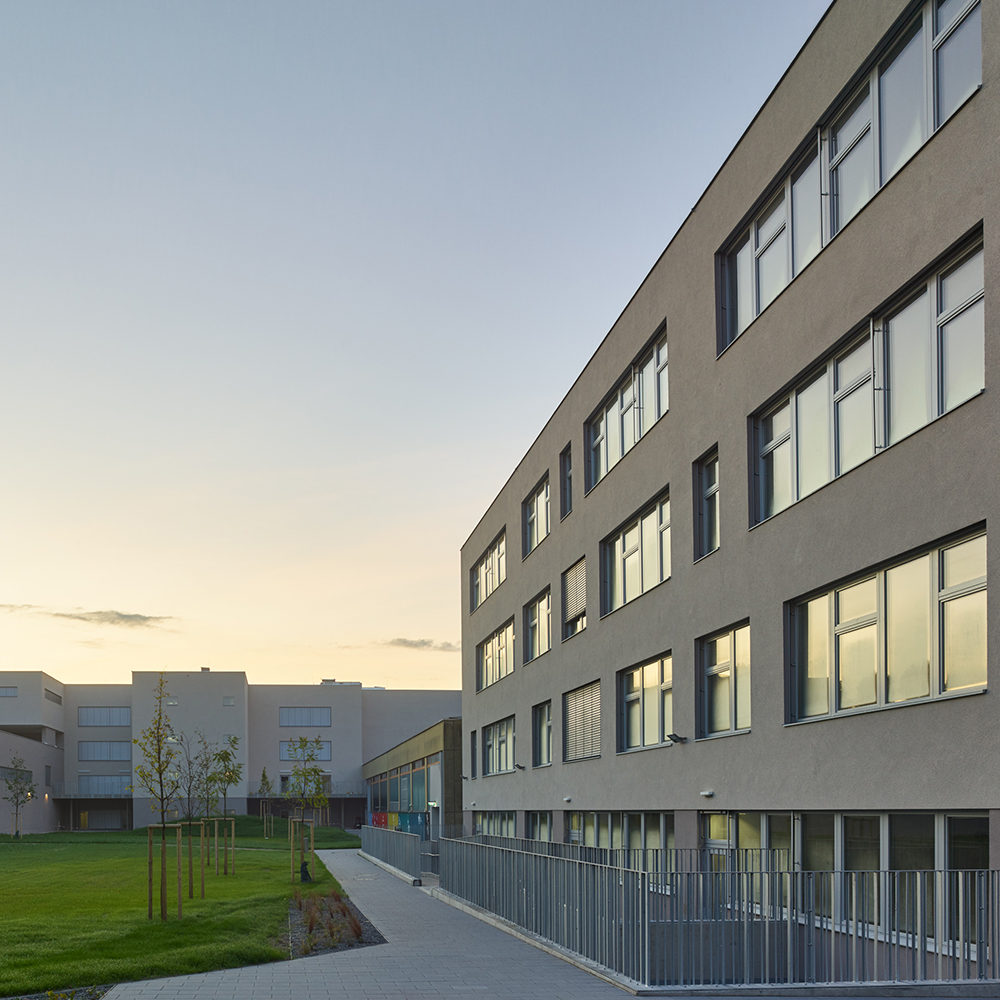
1st Prize
Extension of the Jochbergengasse school
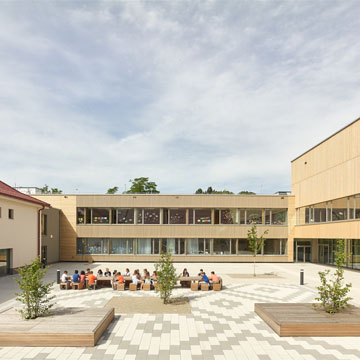
1st Prize
Primary School Christian-Bucher-Gasse
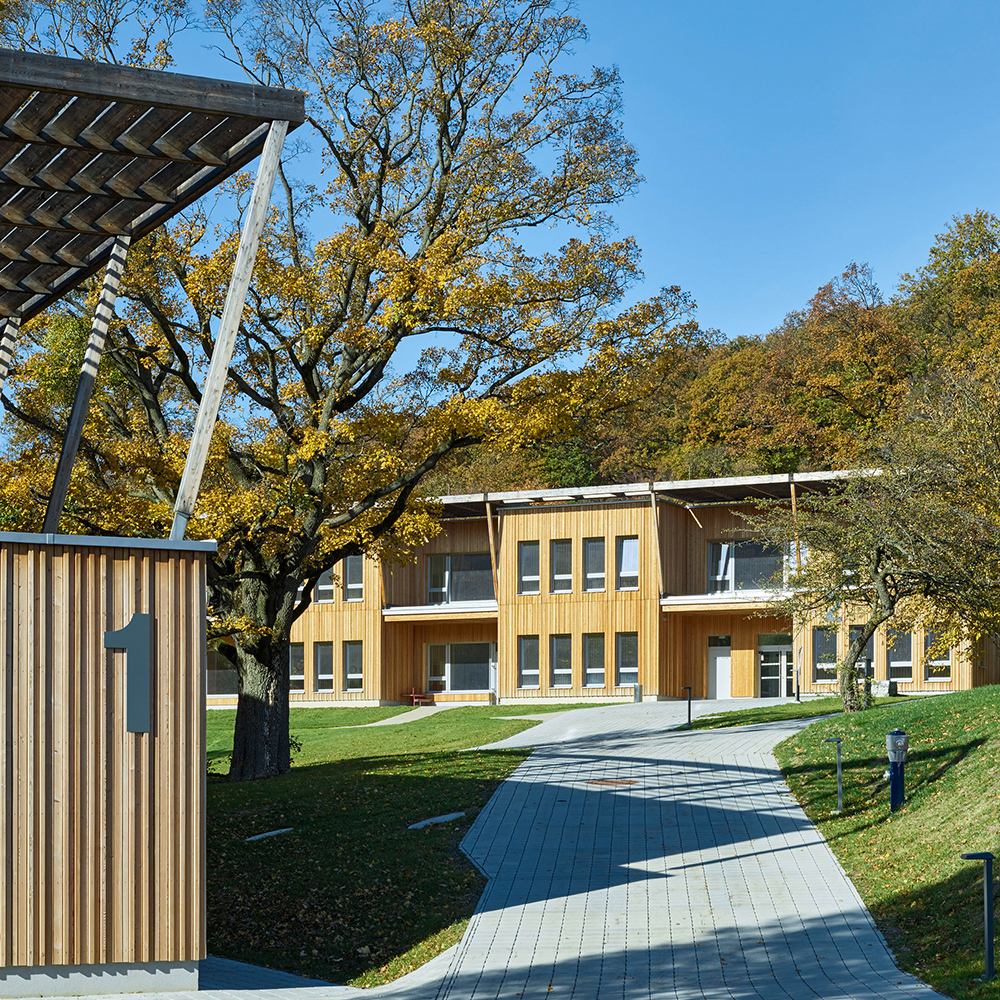
Kindergarten Pötzleinsdorf
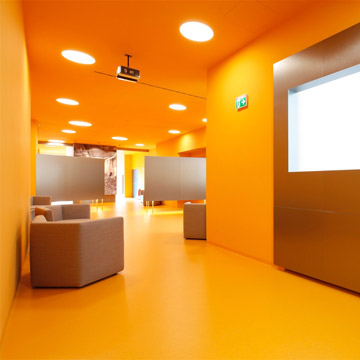
Chamber of Labour Education and Training Centre
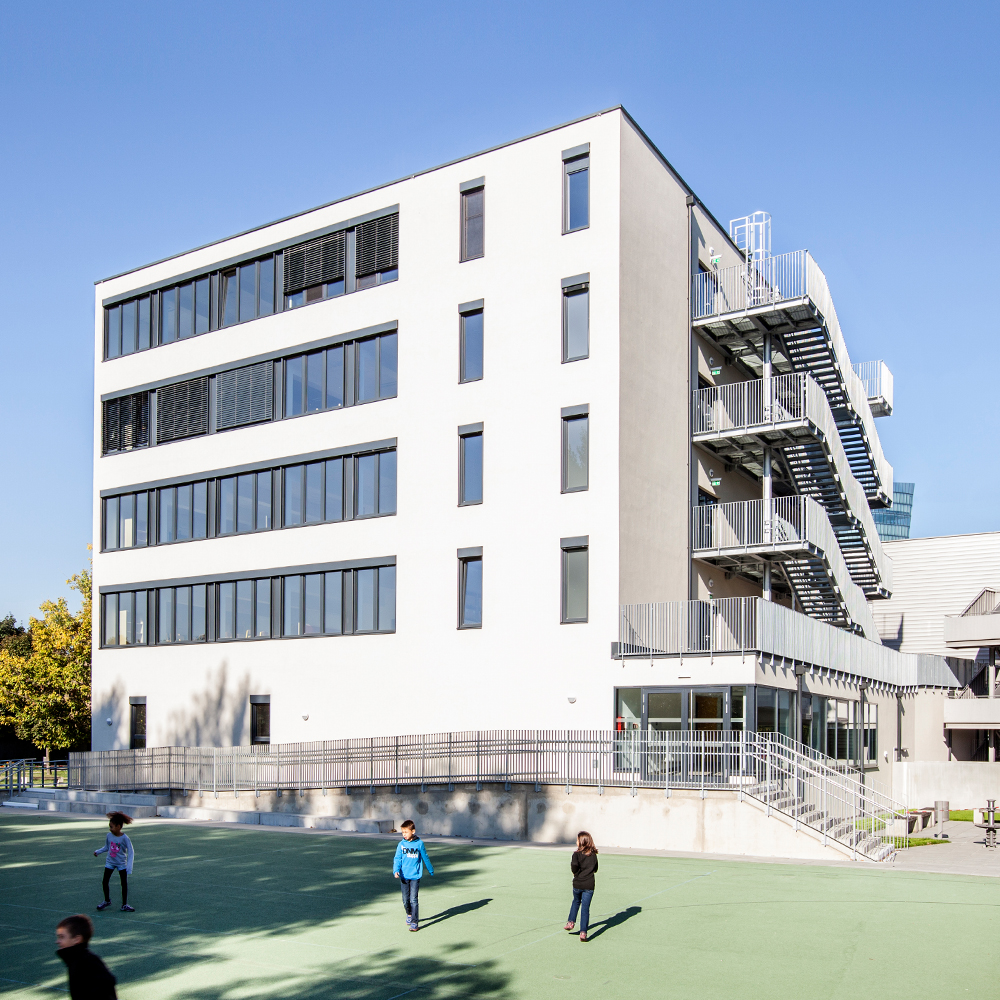
School buildings in timber construction
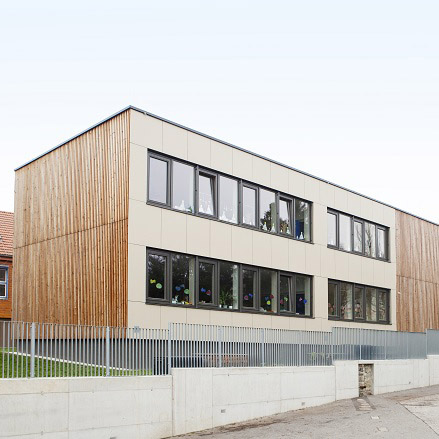
Waldschule ("Forest School")
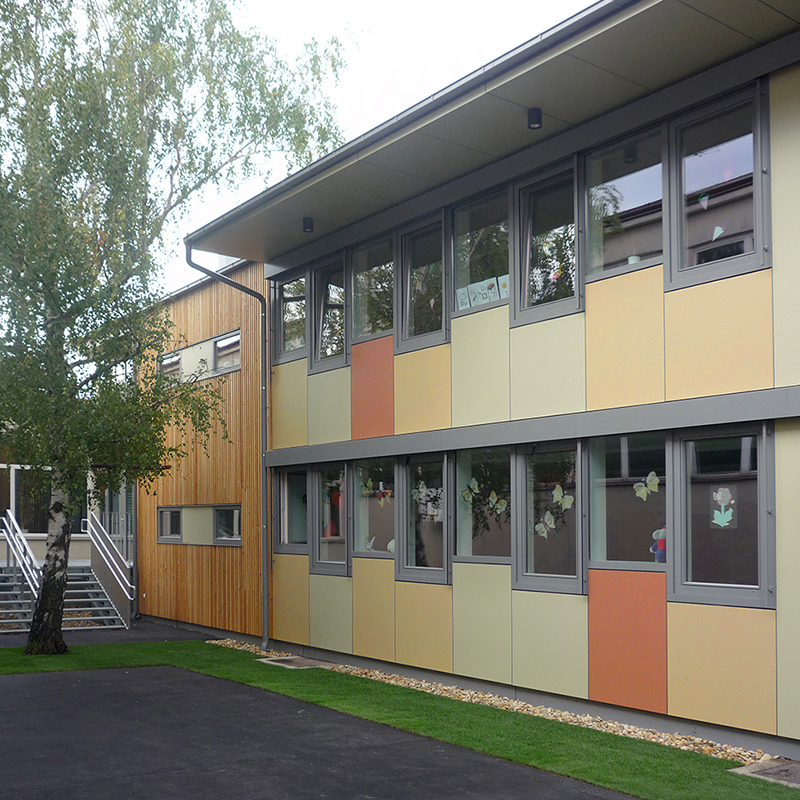
Prückelmayrgasse Elementary School
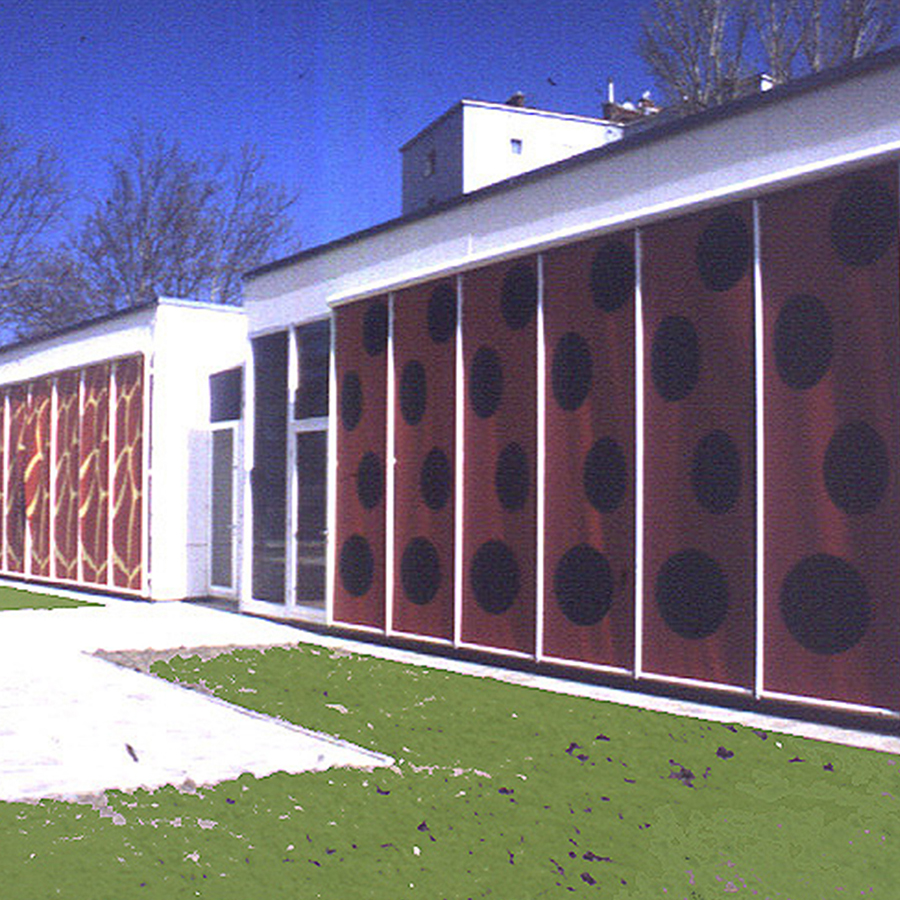
Child-care Centre Andersengasse
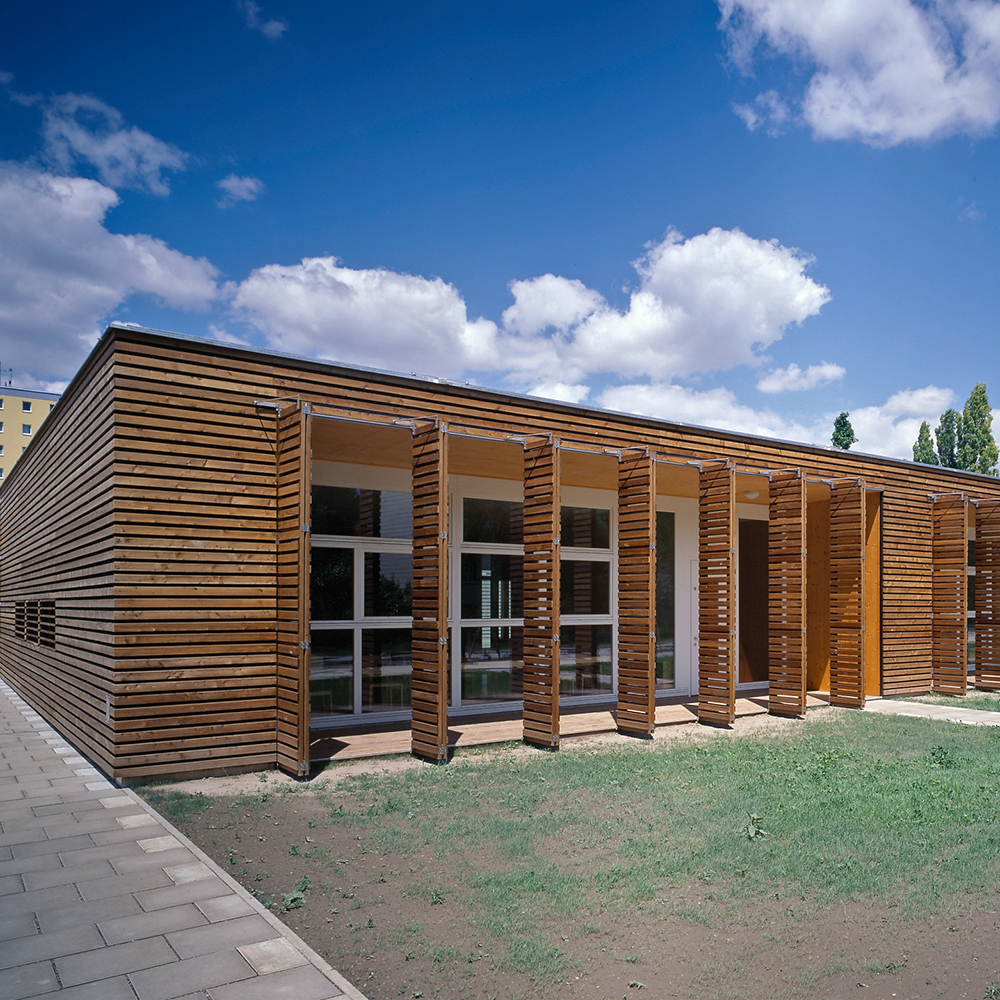
Child-care Centre Schrebergasse
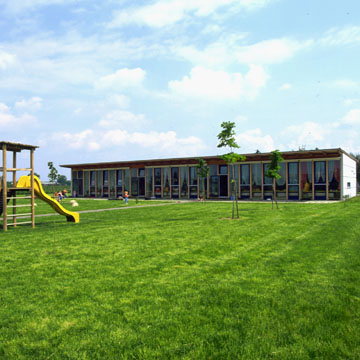
Child-care Centre Anton-Schall-Gasse


